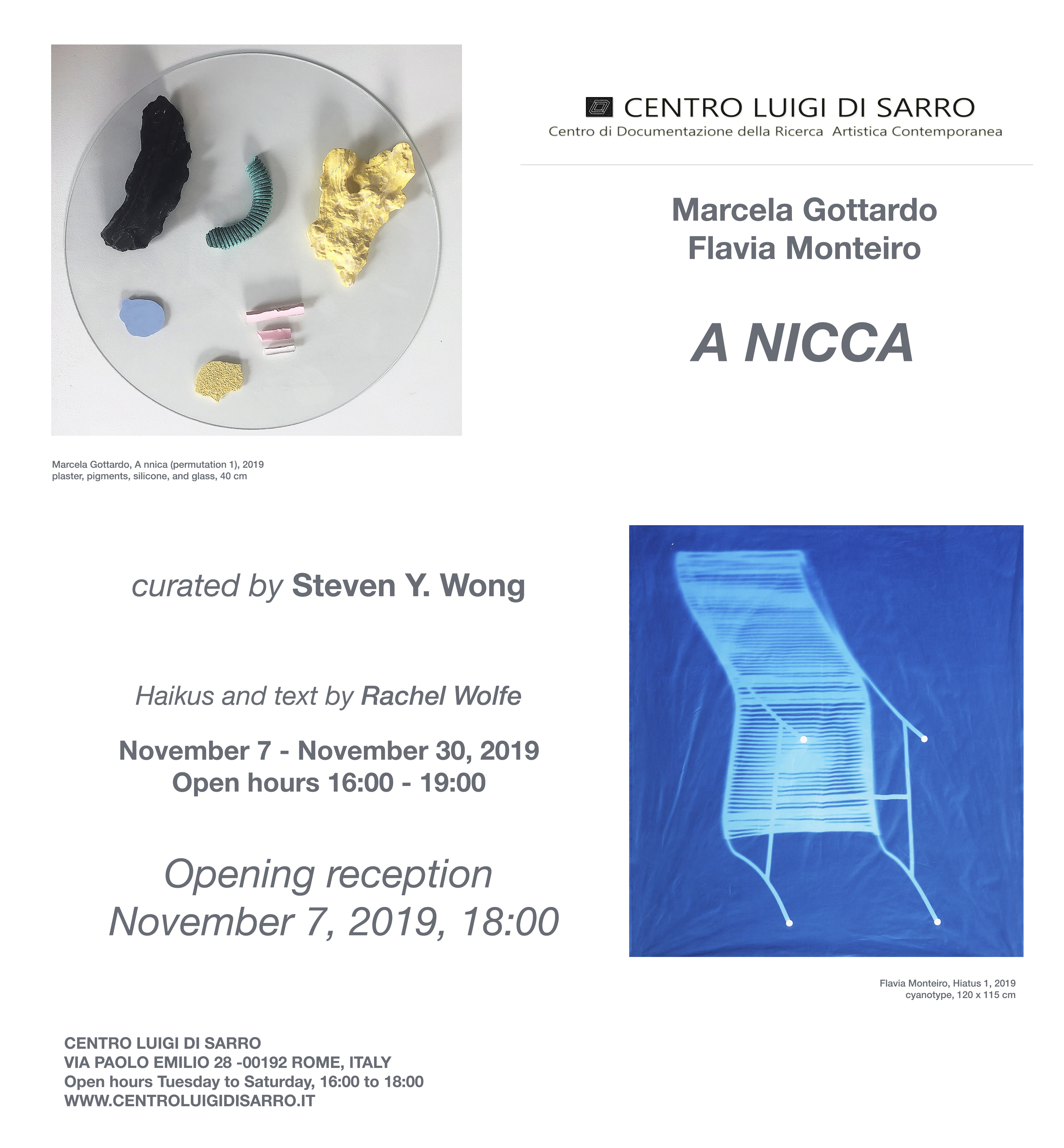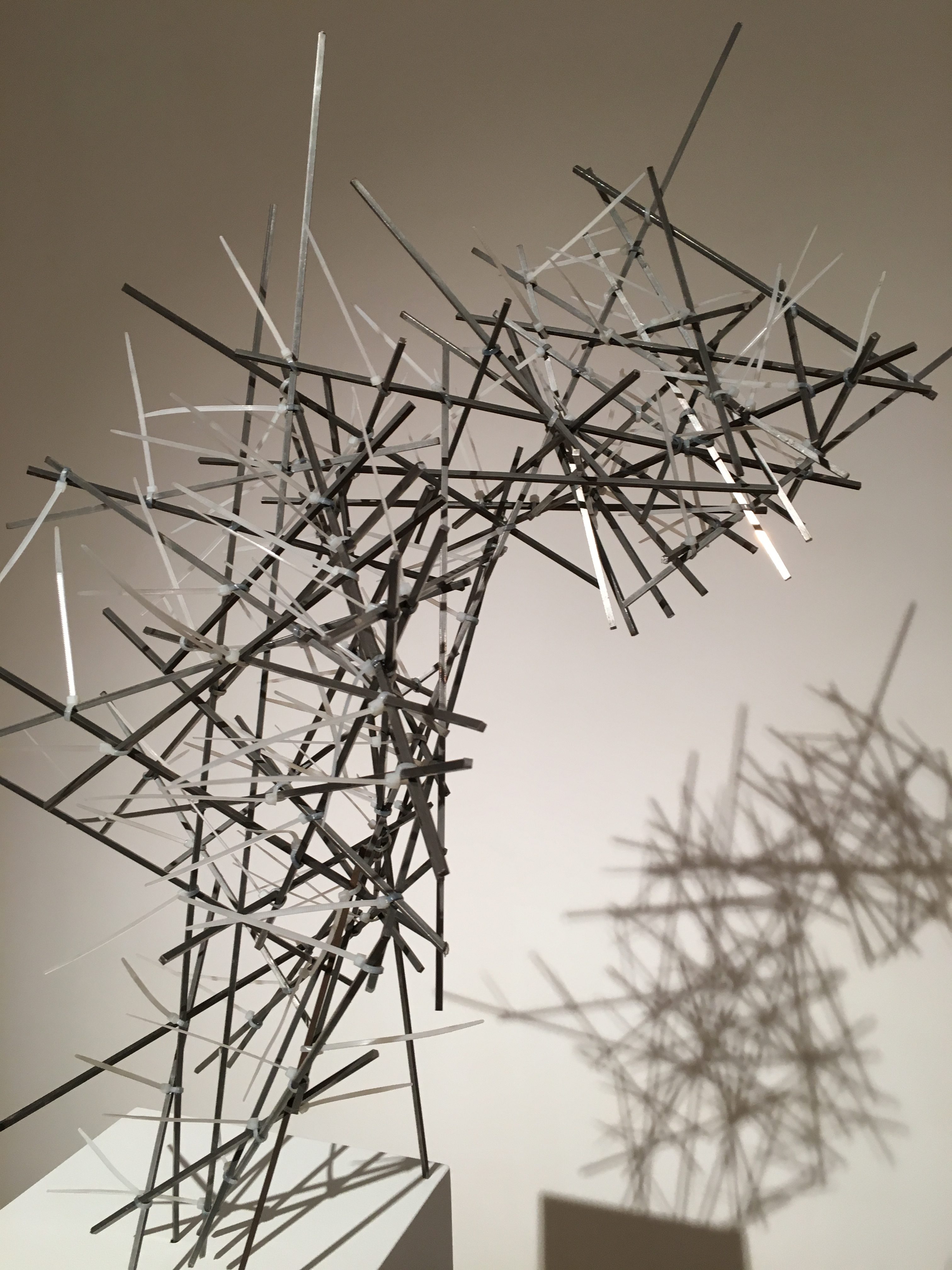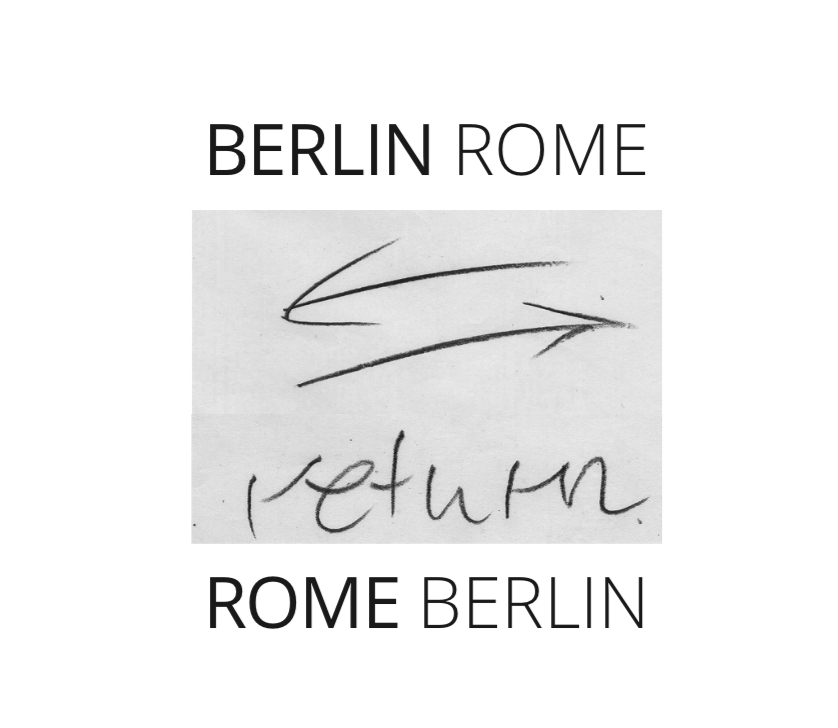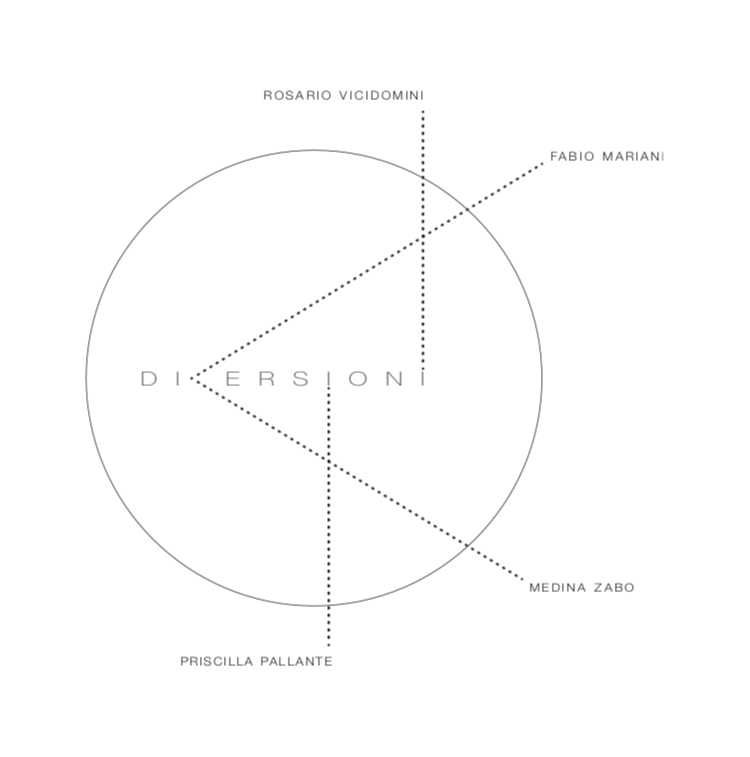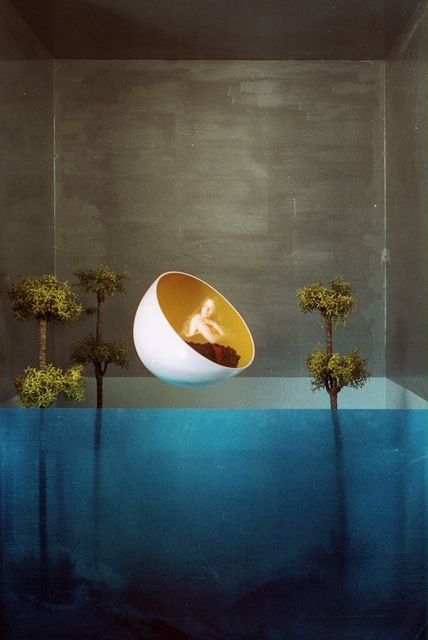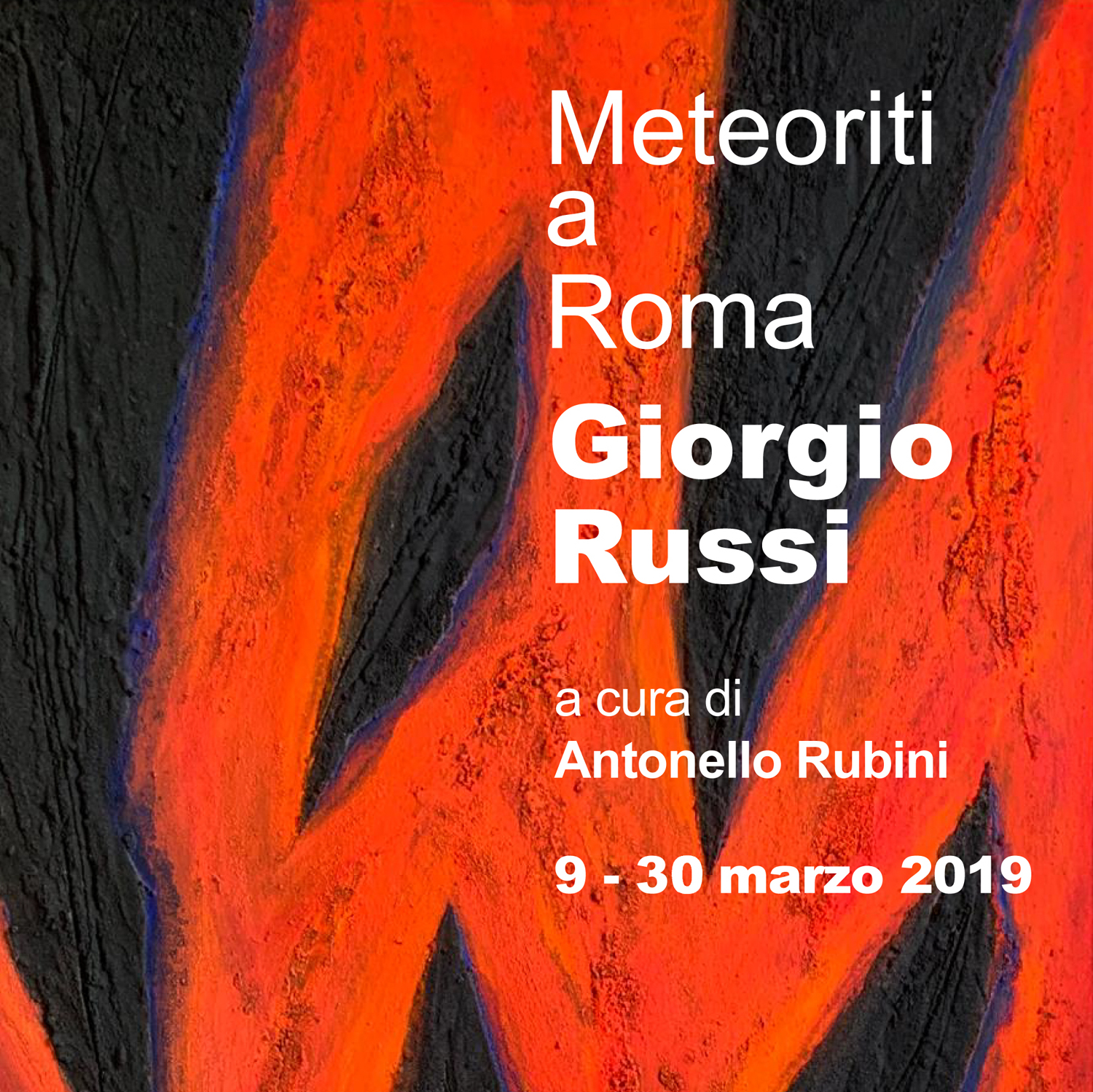A Nicca, refers to a core doctrine of Buddhism that is the idea of impermanence, one that articulates that existence is in a constant state of change. The etymology Anicca is a negation of the root word “nicca” meaning stability and continuity. The works of Marcela Gottardo and Flavia Monteiro are less of a negation of permanence but rather explore the Buddhist concept of Anicca through the instability and transformations of materiality and being. Together they interrogate how we see through the subjective lens of our own knowledge and embrace our destined impermanence, beyond the philosophical and existential crisis of nihilism.
Gottardo employs familiar everyday materials and or themes to create fragmentations of one’s temporal existence and conception of self. These fragments are assembled and treated as unique forms that are in a stasis of decay, yet echo the memory of organic forms and negative space. Gottardo’s work presents material explorations of form, resulting in a survey of art works that evoke an archeological indexing, encouraging a visual unearthing of artifacts.
Monteiro showcases several bodies of works that include suspended cyanotypes that echo garments drying on a clothesline; and also include organic shapes of everyday objects including the shadows of desert flora. Monteiro examines her adaptation to living in a new desert environment by embracing the desert sun and its shadows in the creation of her cyanotypes. These works refute her arid environment through the deep blues inherent to cyanotypes, the liquid process developing these images, and through blockages of the desert sun’s radiation in exposing the cyanotypes. These cyanotypes are also pared with photographs that reinforce the deserts yearning for water. Monteiro contrasts the cyanotypes and photographs with her warm paintings of grids and structures that suggest a containment of not only color, but the specter of fluids enveloping the void. Monteiro’s practice examines ideas of transformation through the visual entropy of structure, documenting ones environment and the desire to contain.
FriedrichWilhelm Nietzsche was critical of Buddhist concept of Anicca, postulating it in opposition to his idea of “will to power”, where he equated the idea of impermanence with nihilism. Gottardo and Monteiro’s works challenge his accusations of the ascetic practice Buddhism (and Christianity) as a “will to nothingness”, through their affirmative exploration of the ever-changing material and environment. Their works speak to their transition of impermanent lived lives within the Brazilian diaspora. Ultimately this exhibition embraces our world’s reality of impermanence with a goal of acceptance of the instable and unknown. (Steven Y. Wong, USA)
Steven Y. Wong was born Los Angeles where he currently is the curator at Los Angeles Municipal Art Gallery. Previously he was Interim Executive Director and senior staff curator at the Chinese American Museum where he developed and implemented both contemporary art and history exhibitions. Steven has lectured at UC Santa Barbara and was an adjunct professor at Ventura College and Pasadena City College in Asian American Studies, History and Art Studio Departments. Steven holds a Masters in Asian American Studies from the University of California, Los Angeles and a Master in Fine Arts from the University of California, Santa Barbara.
Marcela Gottardo was born in Brazil. She lives and works in Pistoia, Italy. Marcela’s artwork utilizes materials and processes to investigate the nature of being and becoming. She received a Master of Fine Arts in 2014, and a Bachelor of Fine Arts in Painting in 2012, at Otis College of Art and Design, Los Angeles, California, USA.

Flavia Monteiro was born in Rio de Janeiro, Brazil. She lives and works in the Coachella Valley desert in California (USA). She explores altered perceptions by continually reworking her artwork until preconceptions and expectations are broken and a transformation is completed. Flavia has exhibited her work in California at Los Angeles Municipal Art Gallery, Palm Springs Art Museum, Vincent Price Museum, The Bolsky Gallery, Los Angeles International Airport, and has created public artworks for the cities of Malibu and Glendale. Her artwork has been exhibited in galleries in Rio de Janeiro and at the Ibero-American Art Salon at the Mexican Cultural Institute (Washington, DC). Flavia earned an MFA from Otis College of Art and Design in 2013, and BA degrees in Art Education and Social Communication. She completed postgraduate studies in Art Therapy. Before moving to the US in 2003, she worked as an Art Educator and developed art education programs at Colégio Pedro II, the Brazilian Federal model school in Rio.

